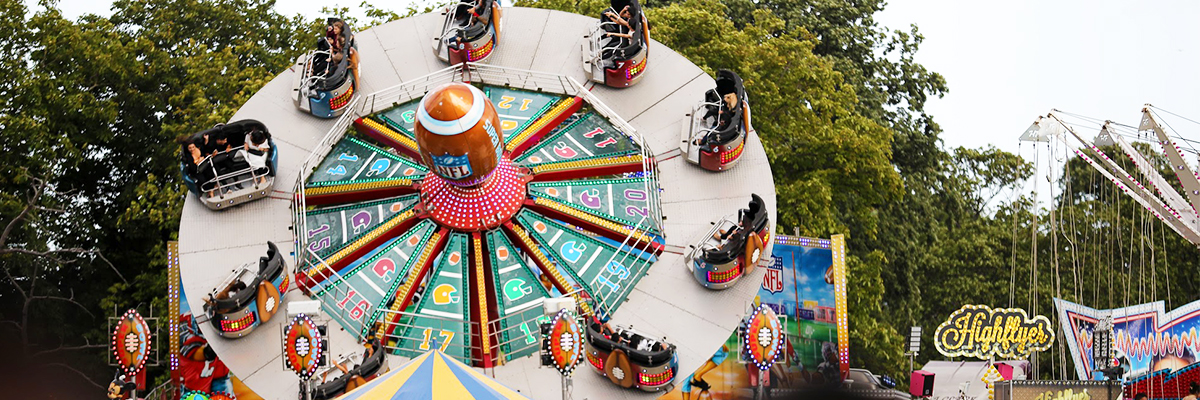
Bouncy Castles, Inflatables & Fairgrounds
Fairground Rides
Fairground rides should be hired from and operated by a competent company. The fairground provider should supply you with risk assessments, annual inspection certification and a minimum £10 million of Public Liability Insurance (PLI) valid for the event date. For further information on the duties of fair organisers visit www.hse.gov.uk for further information.
Inflatables
If you are intending to have a slide, bouncy castle or some other inflatable structure at your event you should ask the supplier to provide the relevant risk assessment(s) that they have carried out. You should also have a copy of manufacturer’s guidelines for installation and operation.
The safety of inflatable play devices not only depends on it design, but more on it safe operation, maintenance & inspection routines.
Safe Operation
Guidance on safe operation of play inflatables “The safe operation of play inflatables, including bouncy castles” can be found on the www.pipa.org.uk web site. Key points to look out for are:
- Instability due to inadequate anchoring.
- Instability due to winds in excess of the maximum safe wind speed specified for that structure.
- Poor segregation of children; either overcrowding or lack of segregation with large more boisterous children and infants being allowed to use it at once.
- Poor supervision, lack of attendants, children being allowed to bounce on the sides/front steps or climb the walls.
- A robust and recorded weather monitoring procedure
- Details of the safe operation of play inflatables, including bouncy castles, can be found at: www.pipa.org.uk also www.hse.gov.uk/entertainment/fairgrounds/inflatables
Maintenance and Inspection
There are two schemes for the inspection and certification of inflatable play devices. The Amusement Devices Inspection Procedure Scheme (ADIPS) and the Performance Inflatable Play Accreditation Scheme (PIPA). Generally, inflatables found at traditional fairgrounds and theme parks will have been tested under ADIPS while inflatables found at galas, fetes, hired for domestic parties etc tend to have been tested under PIPA. Both allow operators to comply with their duties under health and safety law.
If neither scheme has been used organisers would not be permitted to bring the structures on to Council land
An inflatable tested under either scheme should have a safety certificate issued by an independent examiner, each certificate will have a unique number. If there is any doubt over the status of the certificate, it can be confirmed by checking the Adips website www.adips.co.uk or in the case of PIPA by checking the tag number of the device against the database on the web site www.pipa.org.uk or contacting them directly.
Wind Speed Monitoring
Weather conditions and location is an important factor when developing a site plan and locations for temporary demountable structures to minimise any potential risks caused by the weather.
During your event wind speeds must be initially measured and then periodically measured where there are temporary structures. Monitoring arrangements will need to consider each individual situation.
Observations should be hourly unless it is felt there is an increase in wind speed at which the following action levels should be considered.
The example matrix below demonstrates how event organisers can plan and quickly resolve any potential hazards;
|
Temporary Structure |
Operational max gust Speed | 1st action – 75% maximum gust |
2nd action 90% maximum gust |
| e.g. Pop up Gazebo | e.g. 22.5mph weighted | e.g. 17mph – Remove sides and remain at structure to assess |
e.g. 20mph – evacuate immediate area around structure and dismantle |
